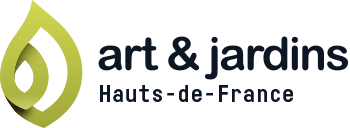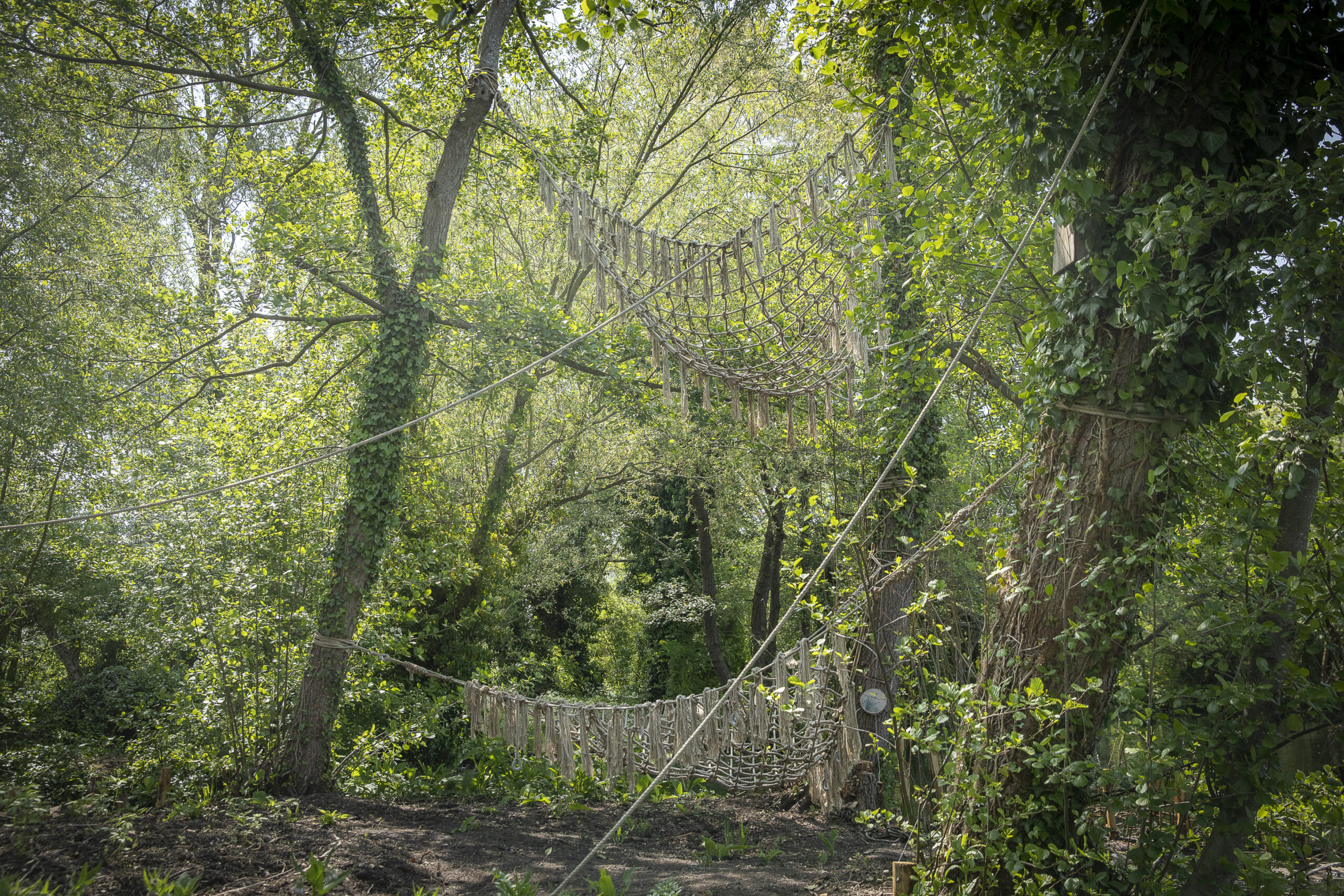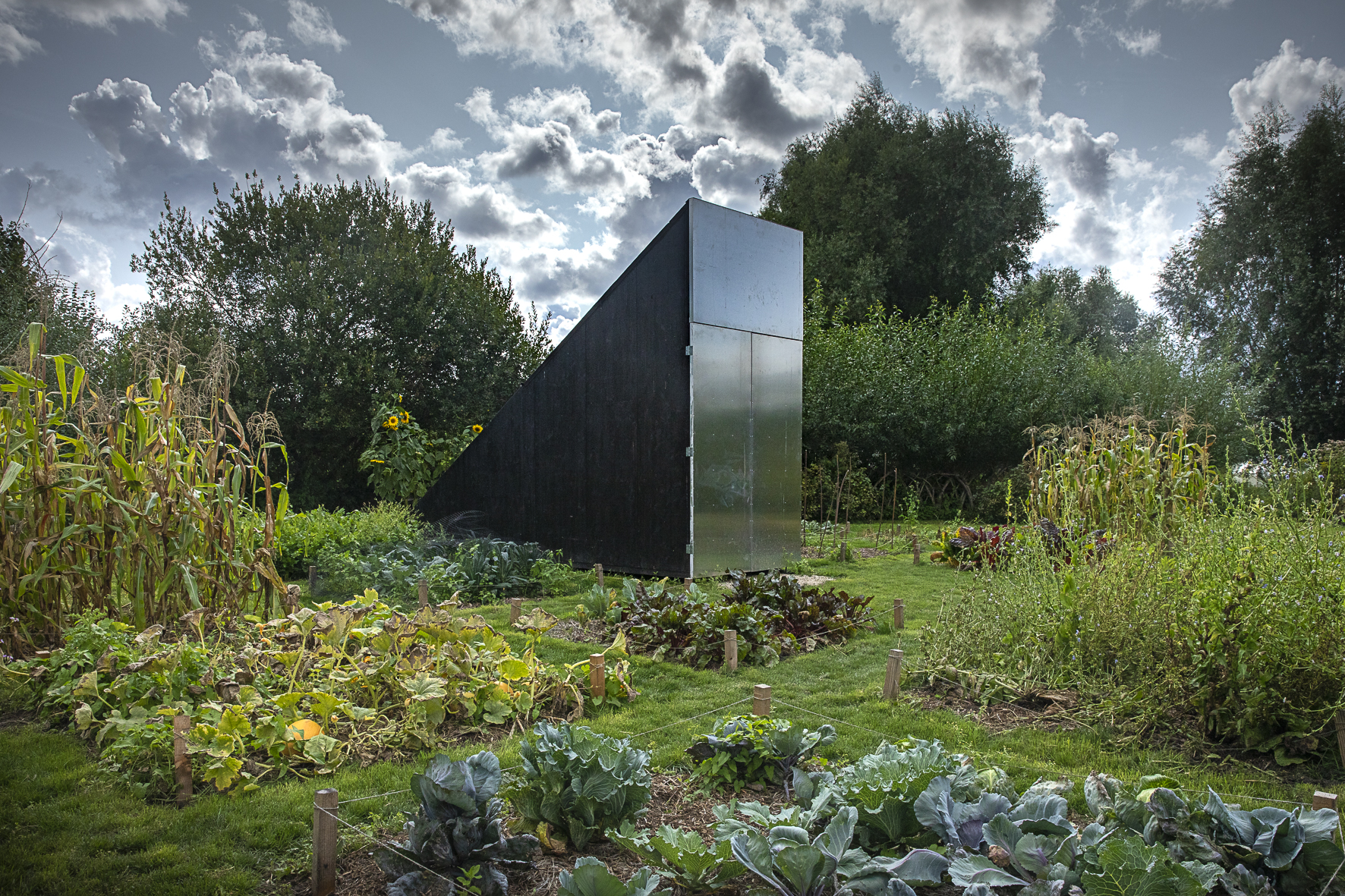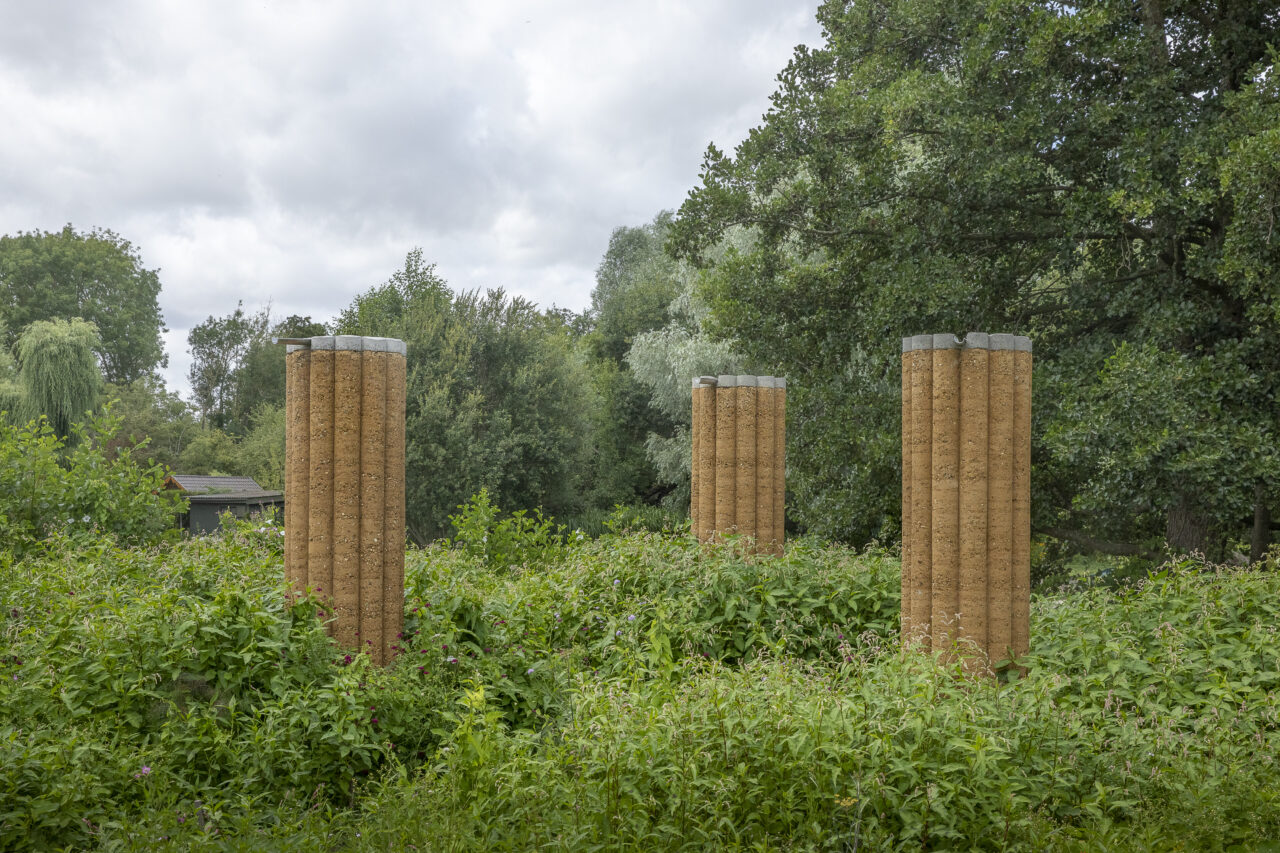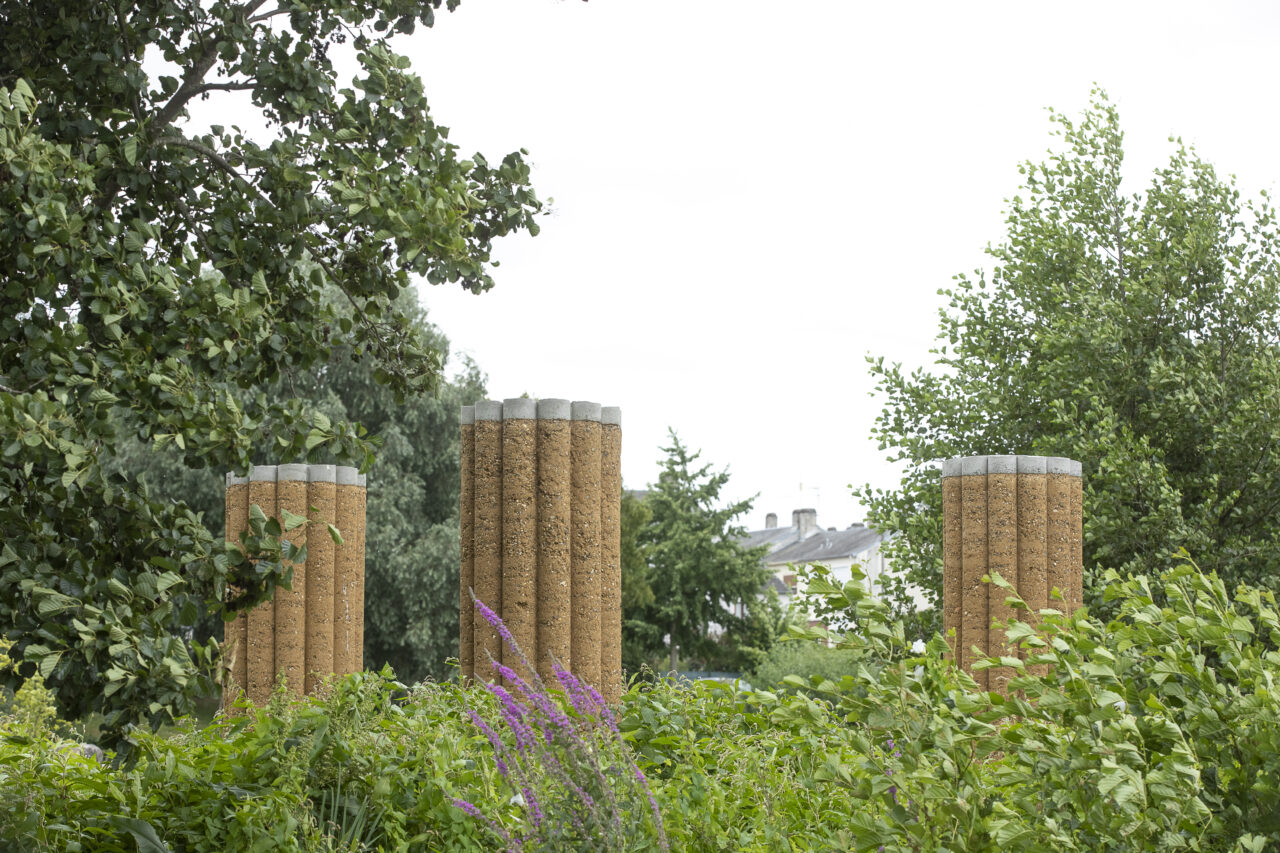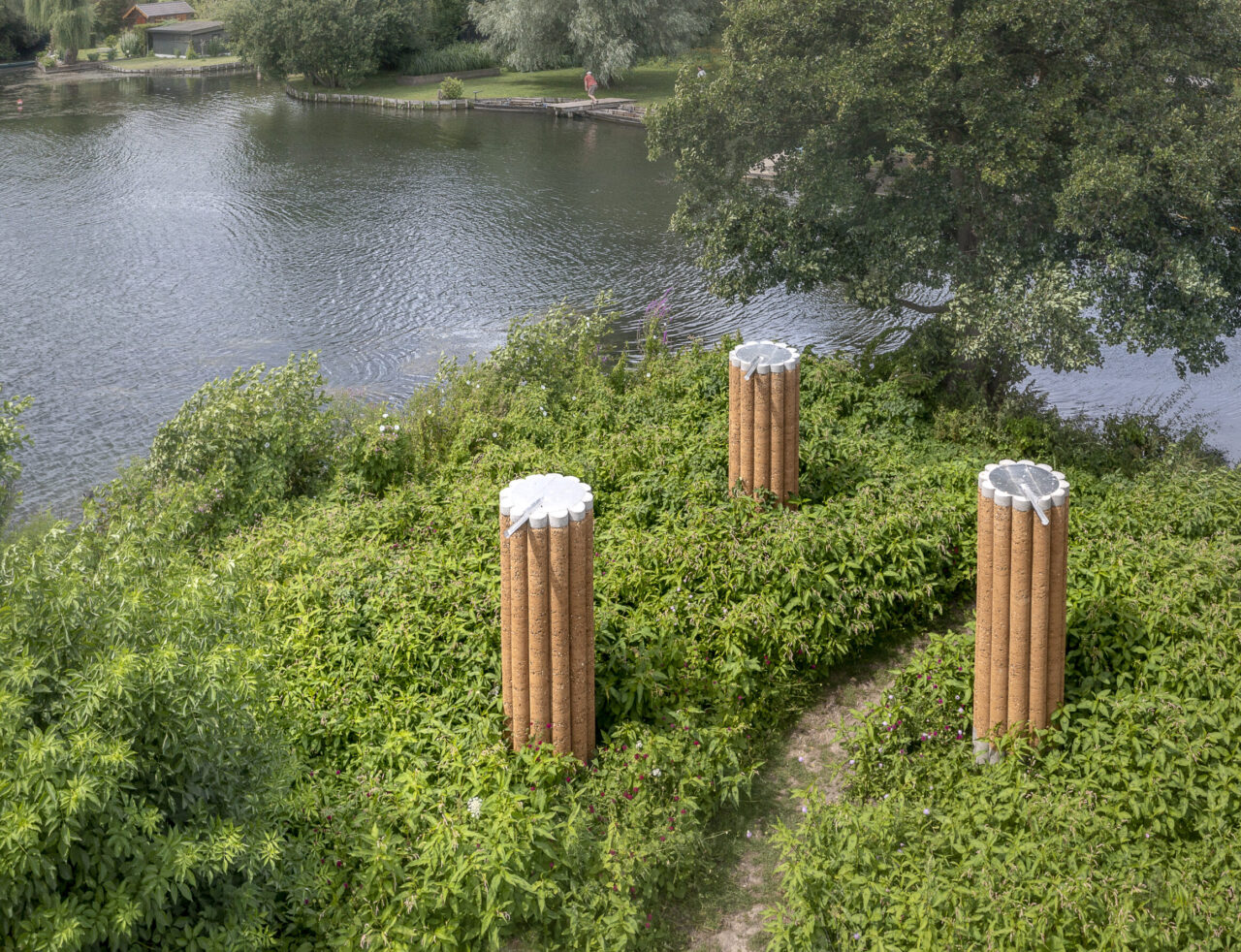The Garden of Three Columns combines a fragment of raw earth architecture and freely evolving vegetation on a small island in the Clermont pond. Raw earth construction is little known, but it is a serious alternative to industrial building materials that are responsible for significant greenhouse gas emissions. Earth is a geo-sourced, abundant, and inexpensive material, and its use does not create waste upon destruction, as it returns to the earth.
The columns are constructed using the traditional rammed earth technique, which involves compacting slightly damp earth in successive layers in a wooden formwork to form mostly massive and straight walls. The three columns explore the plastic potential of earth by using a tubular formwork that allows for this fasciculated shape, whose surface plays with light and shadow.
The implementation of rammed earth evokes the work of humans in the hortillonnages: islands consolidated by wooden sheet piles that hold the sediment deposited regularly by the hortillons. Around the columns, the planted masses form an evanescent setting that contrasts with the rest of the plot offered to natural dynamics. The hortillonnages have exceptional biological richness that the free evolution of the environment allows to discover. This spontaneous vegetation promises surprises to those who take the time to observe it.
Without a roof, the columns appear to be vestiges of a larger, vanished whole. If the poetry of ruins speaks to us of the marks of time and fragile existence, it finds a living resonance in the echoes of the garden.
The artist
(Français) Vincent Dumay & Baptiste Wullschleger

